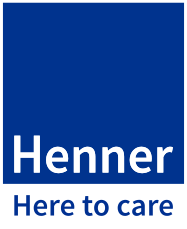Stretching : What you should know
Welcome to the fifth session of our programme. This time, it’s all about stretching. We’ll learn when to stretch and why. We’ll also share a few exercises that can easily be integrated into your training routine.
Session 4 recap
In the last session, we looked at the post-training phase of a running workout. We explained how a cool-down helps the body relax, allowing the heart rate to drop slowly and the muscles to become loose – with a proper recovery period, performance is even increased.
After exercise, our bodies need a break. Determining the length of time depends on the intensity of the run. It’s also important that our bodies stay hydrated. More on hydration in the next session.
What is stretching?
Stretching puts the muscles under ‘tensile stress’. This stretches the muscles and increases joint mobility. It also loosens stiff muscles and promotes flexibility.
Stretching is important for the motor function of the muscles and tendons. It also supports the stretch resistance of the muscles. The result: increased strength. Stretching also helps compensate for muscular imbalances.
Some believe that stretching prevents muscle soreness, but this is a myth that hasn’t been scientifically proven.
Static and dynamic stretching
There are 2 types of stretching:
- Static
- Dynamic
Static stretching is what we would refer to as regular stretching.
The positions in static stretching are held for at least 30 secs, along with feeling a slight pull in the corresponding muscle.
Passive static stretching involves simply holding the stretching position.
Active static stretching involves actively tensing the counterpart of the stretched muscle at the same time.
Active static stretching example:
When stretching the back of the thigh, lie on your back, pulling one stretched leg towards the torso. Pull the toes up and tense the front side of the thigh.
During stretching exercises, it’s normal to feel a gentle pull in the muscle, but it should never hurt!
In dynamic stretching, the position isn’t held, but there’s controlled movement involved. The stretch is then repeated several times.
Examples:
- Moving from downward dog to runner’s lunge
- Wringing out the towel alternate arm movements
- Side to side lunge with reach
Because it improves mobility, runners, cyclists and swimmers swear by dynamic stretching.
Stretching: Before or after exercise?
There are different opinions on the before or after debate, but one thing’s for sure: Stretching cold muscles is a faux pas. If you’re wanting to stretch before working out, warm up first and then do some stretching.
Dynamic stretching exercises are best before training. Important: A short 10-15 mins before exercise will do. Stretching for too long can negatively affect the performance of the muscles.
After training, stretching can help relax the muscles and help in faster recovery. The muscles that you’ve worked on are loosened, and tension is stretched out.
After a workout, you can use either stretching method, but be careful not to hold static positions for too long so that you don’t compromise the blood flow to the muscles.
Also take care not to make any abrupt movements. Otherwise, you run the risk of tearing ligaments or muscles.
When not to stretch
If you’re experiencing severe pain, inflammation or bruising, stretching is not recommended. This also applies for those with hypermobility in their joints. Since stretching removes tension, this causes greater instability in the joints.
After a highly intense workout, stretch gently. During training, the muscles have suffered tiny injuries, which can be made worse by stretching. The same applies when experiencing acute muscle soreness.
All stretches after a workout/training should be dynamic. It’s important to note that the positions aren’t held, but there’s controlled movement involved. The length of each stretch should be around 40 secs, for a maximum of 120 secs.
The stretch is then repeated several times.
Post-training stretching exercises
For the glutes:
Bend your knees slightly or sit on a chair and place your right foot on the knee of your left leg.
Press gently against the right knee. You should feel a gentle pull in your glutes. Repeat the exercise with the other leg.
For the quads:
Grab your left ankle with your left hand and pull it towards your glutes. Make sure both thighs are parallel and your upper body is straight. Repeat with the other leg. You can also do this exercise lying on your stomach.
For the adductors (inner thighs):
Stand with your legs spread shoulder-width apart. Place your hands on your hips. Bend the right knee slightly, the left stays straight, ensuring that the right knee does not go beyond the top of the foot. Repeat with the other leg.
For the calves:
Stand in a walking position with your right leg forward. Both feet are also pointing forward. With the left foot resting on the floor and the left leg is straight, bend the right leg and push the hip slightly forward. You should feel a pulling sensation in your back calf. Repeat with the other leg.
For the calves and Achilles tendon:
Stand in front of a wall (or a wide enough tree). Place the hands shoulder-width apart on the wall, just below the shoulders. Move the right leg one step backwards with the left leg slightly bent. Gently lower the heel of the right leg towards the floor. You should feel a pulling sensation in your left calf. Repeat with the other leg.
For the back:
Clasp your hands together, turning your palms outwards. Stretch your arms above your head. Then, vertebra by vertebra (starting from the cervical vertebrae), roll down until your upper body is hanging. Place your head as close to your legs as possible and hold onto the ankles with your hands.
For more stretching exercises and long-term programmes, search the app!
Challenge
Add these stretches to your training routine for a few days. Do you notice a difference in your body? Which areas could benefit from more stretching?
